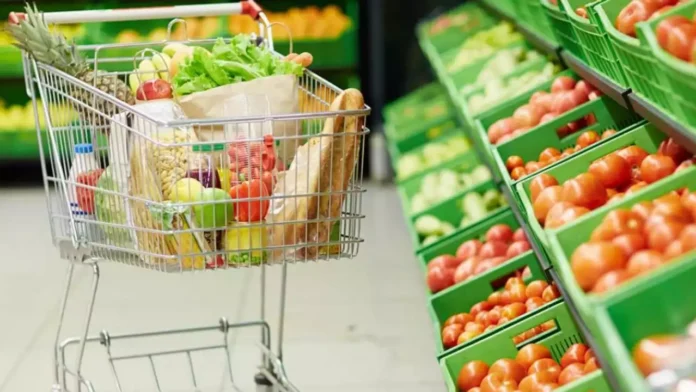The government anticipates a decrease in food prices after the India Meteorological Department (IMD) predicted an above-normal monsoon, as stated in the recent monthly economic review by the Ministry of Finance.
The report indicated that above-normal rainfall would result in increased crop production.
“Further relaxation of food prices is on the horizon as IMD expects above-normal rainfall during the monsoon season, which is likely to contribute to higher production,” the finance ministry’s March 2024 monthly economic review stated.
In India, food inflation dipped to 8.5 percent in March from 8.7 percent in February. The rise in food inflation is mainly attributed to higher prices of vegetables and pulses. To tackle this challenge, the government has taken steps such as imposing stock limits to curb hoarding, bolstering reserves of essential food commodities, and periodically releasing them into the open market.
Continue Exploring: Govt rolls out ‘Bharat’ rice at INR 29/kg to tackle rising food prices
Additionally, it has relaxed imports of vital food items and directed supplies through specified retail channels.
Sources within the government have disclosed ongoing negotiations with emerging markets like Brazil and Argentina for securing long-term contracts pertaining to the importation of pulses. Notably, discussions are nearing finalization for the import of around 20,000 tonnes of urad from Brazil, while negotiations for importing arhar from Argentina are also advancing toward conclusion.
The government has additionally entered contracts with Mozambique, Tanzania, and Myanmar for the importation of pulses.
Regarding vegetables, a recent report by CRISIL suggests that prices will decrease after June. The report highlights, “The IMD has forecasted an above-normal southwest monsoon in 2024. This bodes positively for vegetable prices, though the monsoon’s distribution remains critical. IMD anticipates above-normal temperatures until June, potentially maintaining elevated vegetable prices for the coming months.”
In March, vegetable inflation stood at 28.3 percent, a decrease from February’s 30 percent but significantly higher than the 8.4 percent deflation observed a year prior. Fiscal year 2024 witnessed substantial volatility, ranging from a low of -7.9 percent in May 2023 to a peak of 37.4 percent in July 2023.
The volatility, as measured by standard deviation, reached 15.4, marking the highest level since fiscal 2020.
In fiscal year 2024, vegetables accounted for approximately 30 percent of food inflation, significantly surpassing their 15.5 percent share in the food index.
Continue Exploring: Retail food inflation eases to 8.52% in March 2024 as prices of pulses and oils decline marginally
The RBI’s monetary policy has also expressed concerns regarding the rising food prices, stating that “Although a record Rabi crop is expected to alleviate cereal prices, the growing frequency of weather-related shocks presents an upward risk to food prices. Geopolitical tensions, along with their impact on oil prices, further compound this risk. Nonetheless, early indications suggest promising prospects for the Kharif crop, given the India Meteorological Department’s forecast of above-normal monsoon conditions this year.”
High food inflation continues to pose a challenge in several major economies worldwide. For example, countries like Germany, Italy, South Africa, France, and the United Kingdom are currently facing elevated food prices.
Globally, there is a pressing need for continued efforts to address food price pressures.





